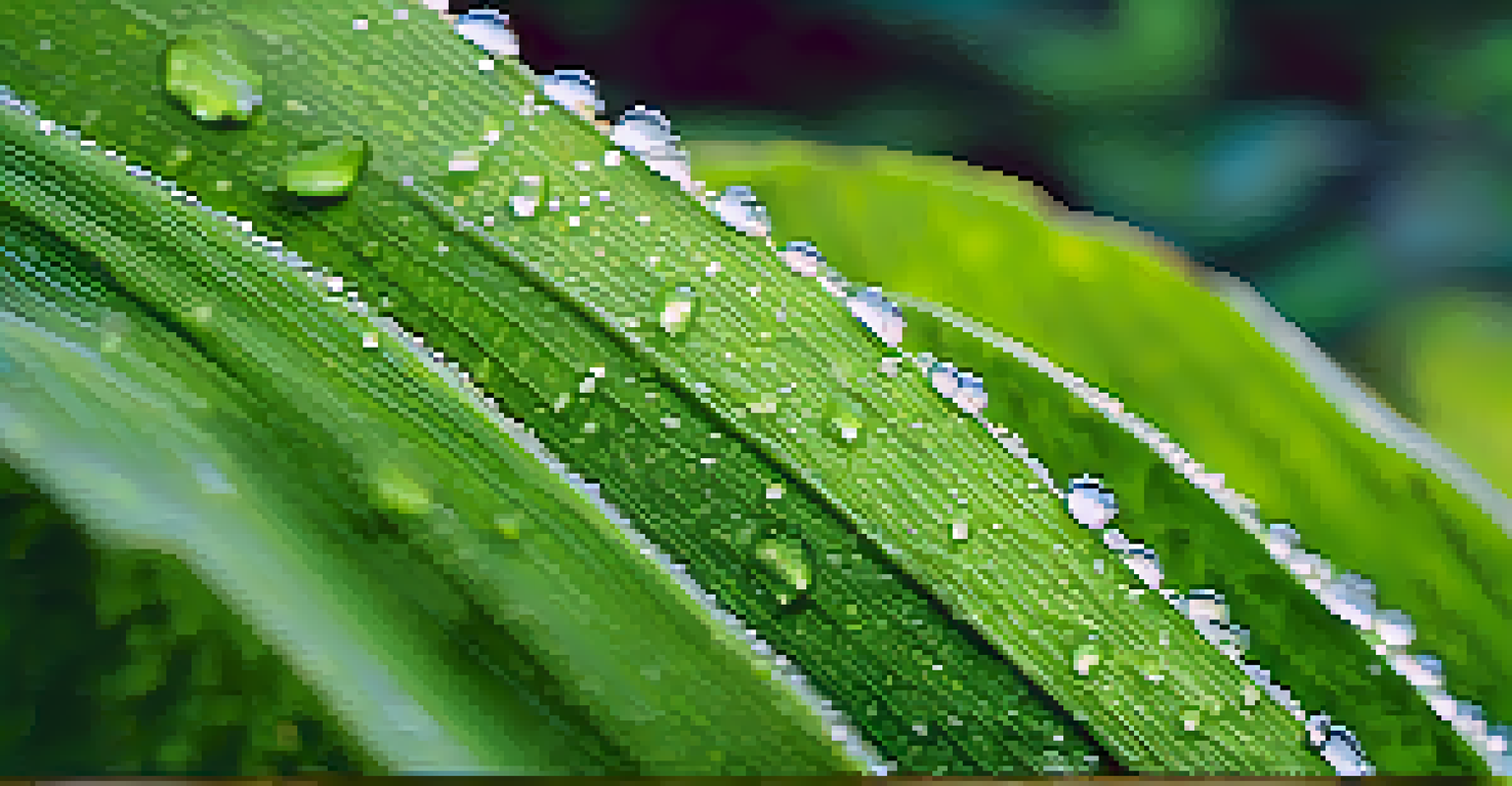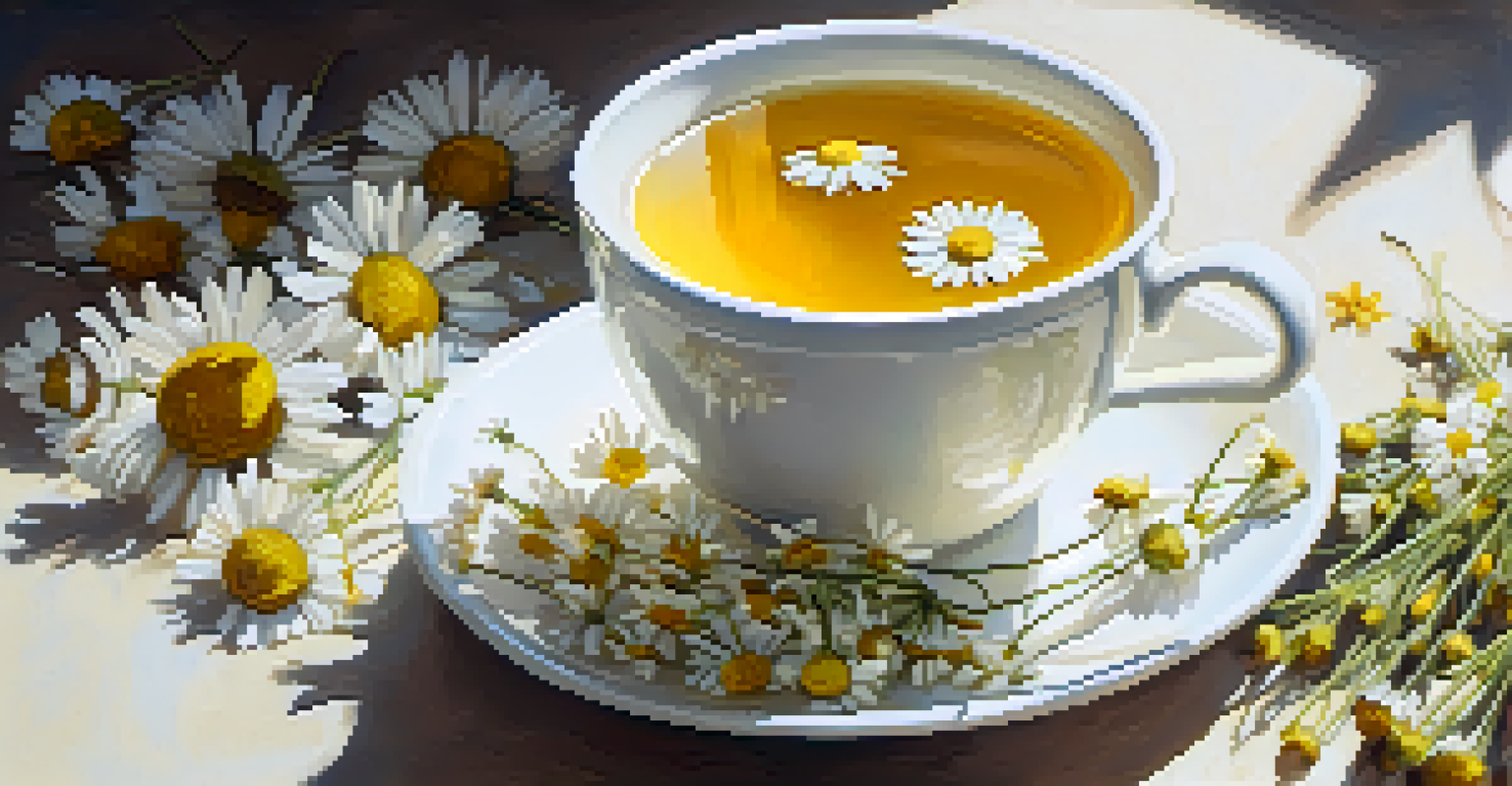Medicinal Uses of Common Wild Plants: A Comprehensive Guide

Introduction to Medicinal Wild Plants and Their Benefits
Wild plants have been used for centuries as natural remedies, often overlooked in our modern world. They are rich in nutrients and compounds that can provide various health benefits, making them invaluable to holistic healing practices. By understanding the medicinal properties of these plants, we can tap into nature's pharmacy right outside our door.
Plants are the original source of medicine and healing, and they have been used for thousands of years across cultures to restore health and well-being.
Many cultures have recognized the healing potential of wild plants, relying on their wisdom passed down through generations. This guide aims to shine a light on common wild plants that you might encounter, exploring their uses and benefits for health. Whether you’re a seasoned herbalist or just curious, this information can empower you to appreciate the natural remedies around you.
As we delve into this guide, think of it as an invitation to reconnect with nature. Each plant has a story and potential, waiting to be discovered. Let’s embark on this journey to uncover the medicinal qualities of the wild plants that grace our landscapes.
Dandelion: A Nutrient Powerhouse for Digestion
Dandelions are more than just pesky weeds; they are packed with vitamins A, C, and K, along with essential minerals. This common wild plant is often used to support digestion and liver health, making it a fantastic addition to your wellness routine. You can enjoy dandelion leaves in salads or brew them into a tea for a refreshing detox.

The root of the dandelion is particularly famous for its ability to promote liver function and stimulate appetite. By encouraging bile production, it helps break down fats, making it a natural aid for those with digestive issues. Incorporating dandelions into your diet can help maintain a healthy gut and improve overall digestion.
Wild Plants Offer Health Benefits
Many common wild plants, like dandelions and echinacea, possess medicinal properties that can support various aspects of health.
Besides their digestive benefits, dandelions also possess anti-inflammatory properties, which can be beneficial for conditions like arthritis. So, the next time you see those bright yellow flowers, remember that they are more than just a pretty sight; they could be a valuable ally in your health journey.
Plantain: The Versatile Healer for Skin Issues
Plantain is a common wild plant that often goes unnoticed, but it's a remarkable healer. Known for its soothing properties, the leaves can be used to relieve insect bites, rashes, and minor cuts. Simply crush the fresh leaves and apply them directly to the affected area for quick relief.
The greatest gift of the garden is the restoration of the five senses.
Beyond its topical uses, plantain is also beneficial when consumed. The leaves can be added to salads or cooked like spinach, offering anti-inflammatory and antioxidant benefits. This makes it a wonderful addition to your diet for overall skin health and wellness.
In many traditional cultures, plantain has been used to treat respiratory issues, such as coughs and bronchitis. Its expectorant properties help clear mucus from the lungs, making it a great natural remedy. With its versatility and effectiveness, plantain is truly a wild plant worth getting to know.
Echinacea: Nature's Immunity Booster
Echinacea, commonly known as coneflower, is famed for its immune-boosting properties. This vibrant wildflower is often used during cold and flu season to help strengthen the body's defenses. Taking echinacea supplements or drinking echinacea tea can provide an extra layer of protection against illness.
Research has shown that echinacea can reduce the duration and severity of colds. The plant contains compounds that stimulate the immune system, enhancing white blood cell activity. So, if you're looking for a way to fend off seasonal illnesses, echinacea might just be the answer.
Embrace Nature's Remedies
Incorporating wild plants into your wellness routine can enhance your health while fostering a deeper connection with nature.
Besides its immune benefits, echinacea is also known for its anti-inflammatory and antioxidant properties. This makes it a great ally for combating infections and promoting overall health. By incorporating echinacea into your wellness routine, you can harness the power of nature to stay healthy.
Yarrow: A Natural Remedy for Wound Healing
Yarrow is a wild plant that has been celebrated for its wound-healing abilities for centuries. Traditionally used to stop bleeding, yarrow can be applied as a poultice to cuts and bruises. Its antiseptic properties make it an excellent choice for treating minor injuries.
In addition to its topical uses, yarrow can also be consumed as a tea to help alleviate fevers and colds. The plant contains compounds that promote sweating, which can aid in breaking a fever. Drinking yarrow tea when you're feeling under the weather can provide comforting relief.
Yarrow is more than just a healer; it also has a rich history in folklore and herbal medicine. Often referred to as 'soldier's woundwort,' it has been used in battle to treat injuries. With its impressive healing properties, yarrow is a must-have in any herbalist's toolkit.
Chamomile: The Calming Herb for Stress Relief
Chamomile is well-known for its soothing effects, making it a popular choice for stress relief and relaxation. The delicate flowers can be brewed into a calming tea, perfect for winding down after a long day. Sipping chamomile tea before bedtime can also promote better sleep quality.
Beyond its calming properties, chamomile has anti-inflammatory and digestive benefits. It can help soothe an upset stomach or alleviate menstrual cramps, making it a versatile herb for various ailments. Incorporating chamomile into your routine can support both your mental and physical well-being.
Simple Ways to Use Wild Plants
Experimenting with teas, salads, and tinctures made from wild plants can be an easy and enjoyable way to introduce natural remedies into your life.
The gentle nature of chamomile makes it suitable for all ages, from children to adults. Its pleasant aroma and flavor make it a delightful addition to your herbal repertoire. So, whether you’re looking to relax or ease discomfort, chamomile is a friendly companion on your wellness journey.
Nettle: A Nutrient-Dense Superfood from the Wild
Nettle may sting when touched, but its benefits far outweigh the initial discomfort. This wild plant is a nutritional powerhouse, rich in vitamins A, C, and K, as well as iron and calcium. Adding cooked nettles to soups and stews can provide a nutrient boost to your meals.
Nettle is also known for its anti-inflammatory properties, making it beneficial for joint pain and allergies. Drinking nettle tea can help alleviate symptoms associated with hay fever and other allergic reactions. Its ability to support kidney function also contributes to detoxification.

The dual nature of nettle, both as a food and a remedy, makes it an exceptional wild plant to incorporate into your diet. With its vibrant green leaves, nettle serves as a reminder that nature often provides the best solutions for our health needs. So, don't be afraid to embrace this prickly yet beneficial plant.
Conclusion: Embracing Nature's Remedies in Everyday Life
As we wrap up this exploration of common wild plants, it’s clear that nature holds a wealth of remedies at our fingertips. From dandelion to nettle, each plant offers unique benefits that can enhance our health and wellbeing. By learning about these plants, we can integrate their use into our daily lives.
Incorporating wild plants into your wellness routine doesn’t have to be daunting. Start small by identifying plants in your area and experimenting with teas, tinctures, or simple salads. Each step you take toward using nature's remedies is a step towards a healthier lifestyle.
Ultimately, embracing the medicinal uses of wild plants invites us to connect more deeply with our environment. It encourages us to respect and appreciate the healing power of nature, reminding us that sometimes, the best remedies are just a walk in the woods away.